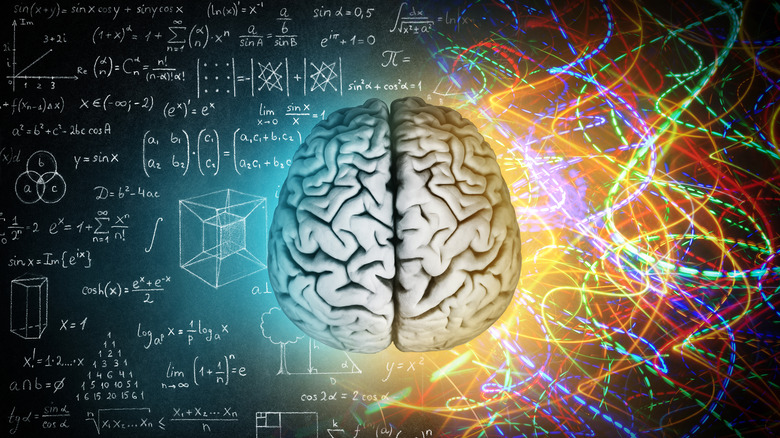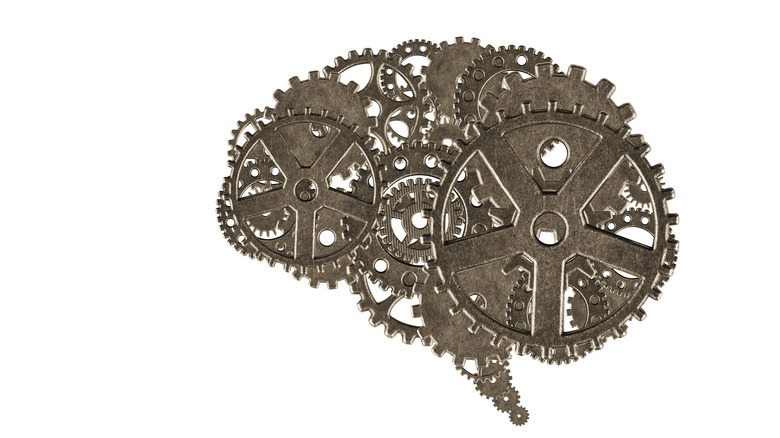What Is The Difference Between Left Brain And Right Brain?
Comprised of more than 100 trillion connections, your brain is perhaps your body's most essential organ (via Healthline). It governs everything that you think, do, and feel and is vital for controlling all of your body's functions. The brain is also divided into two hemispheres, known as the left brain and right brain. Although the brain works as one unit, these two hemispheres are in charge of the opposite sides of the body, and both process information very differently.
According to Simply Psychology, the left hemisphere is in charge of the body's right side, controlling language, speech, and the recognition of words and numbers. The right hemisphere controls the left side of the body and is centered on the recognition of faces and objects as well as creativity. This has given rise to the theory that people can be "left-brained" or "right-brained," depending on their particular strengths and personality traits.
Your left and right brains do not dominate each other
The theory of people being either left- or right-brained has its origins in the 1960s with neuroscientist Roger W. Sperry (via Simply Psychology). Sperry's studies on split-brained people showed that some mental capacities are hard-wired to particular sides of the brain, but others can adapt to be on either side of the brain. He noted that the left side of the brain is responsible for logical thinking, science and mathematical aptitudes, and language skills. Conversely, the right side of the brain is more intuitive, specializes in multitasking, and is responsible for imagination.
However, although the two sides of the brain are different, new research indicates that the concept of a "dominant brain" may not be entirely accurate. A 2013 study published in PLOS One analyzed more than 1,000 patients via magnetic resonance imaging and found that the human brain does not tend to favor one side more than the other, but rather both sides work in concert and complement each other.
There are cases in which one side of the brain may work more than the other on a particular task, however. A 2020 article published by the American Physiological Society, for example, showed that the left brain plays more of a role in the processing of language. Nevertheless, both sides of the brain are needed for full language comprehension.
Your brain is more complex than just two halves
In addition, Medical News Today points out that not everyone's hemispheres work exactly the same way. Some people may process language on their left side, while others do it on their right. A 2021 study published in Proceedings of the National Academy of Sciences of the United States of America revealed that people who are left-handed use different sides of their brains for things like language, vision, and memory than right-handed people do.
The brain receives so much data on a daily basis that it requires complex pathways in order to process and organize it (via WebMD). Because of the sheer amount of stimuli the brain receives, it uses its vast network of neural connections between multiple brain areas to sift through that stimuli and have it make sense. If you listen to music, for example, different parts of your brain respond to it in order for you to hear the music, react to it emotionally, and follow the rhythm and melody. So, while it may be easy to label your various personality traits as a result of you being either "left-brained" or "right-brained," it's probably more accurate to say that you are "whole-brained," with both sides working together to help make you who you are.



